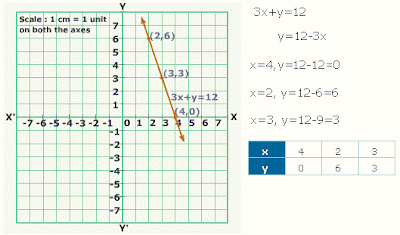Sine graph is the periodic with period 2`pi` .They wriggle back and forth between -1 and 1 in a smooth way. Sine starts at 0 and goes up to 1 .Sine graph generator produce the sinusoidal wave. The sine function graph usually how to find phase sift, period, amplitude for the equation
Sine graph generator following conditions produced y = sinx , Domain (− ∞, ∞) , Range [− 1, 1] , Principal domain (−π / 2,π / 2)
Sample Problem for Sine Graph Generator:
Example 1:
Draw the amplitude for given question y=a sinx for various values of a.
Solution:
For sine is how far the graph gets away from the x-axis, so it is called the amplitude.
Y=a sinx , where a=1,2,3 0.5,0.2
See the given Sine graph generator
For sine is how far the graph gets away from the x-axis, so it is called the amplitude.
Y=a sinx a=2 , -2
See the given Sine graph generator
y= 2 sinx, -2sinx
Example 2:
Draw the amplitude for given question y= sinx for various values of a.
Solution
y=sinx where x values follows
x =1, -1
see the sine graph generator
Example 3:
Show that Periods other than 2pi is a little harder; because there is a lot that the graph does in the course of its period. P=2`pi` /b
Y=sinbx where b=1,2,3,0.5
solution:
See the given Sine graph generator
Practice Problem for Graphs of Sine Generator:
1. Graphing the amplitude for given question y=d sin2x for various values of d
Answer: d values 1,2,3,1.5,4
2. Graphing the period of given question y= sinbx for various values of b
Answer: b values 1,2,3,1.5
3. Graphing sine periods for y= sinbx values of b and d are;
Answer: b=1,2,3,0.5
4. Graphing the amplitude for given question y=t sin3x for various values of t
Answer: t values 1,2,1.5 0.5,0.3.
Sine graph generator following conditions produced y = sinx , Domain (− ∞, ∞) , Range [− 1, 1] , Principal domain (−π / 2,π / 2)
Sample Problem for Sine Graph Generator:
Example 1:
Draw the amplitude for given question y=a sinx for various values of a.
Solution:
For sine is how far the graph gets away from the x-axis, so it is called the amplitude.
Y=a sinx , where a=1,2,3 0.5,0.2
See the given Sine graph generator
For sine is how far the graph gets away from the x-axis, so it is called the amplitude.
Y=a sinx a=2 , -2
See the given Sine graph generator
y= 2 sinx, -2sinx
Example 2:
Draw the amplitude for given question y= sinx for various values of a.
Solution
y=sinx where x values follows
x =1, -1
see the sine graph generator
Example 3:
Show that Periods other than 2pi is a little harder; because there is a lot that the graph does in the course of its period. P=2`pi` /b
Y=sinbx where b=1,2,3,0.5
solution:
See the given Sine graph generator
Practice Problem for Graphs of Sine Generator:
1. Graphing the amplitude for given question y=d sin2x for various values of d
Answer: d values 1,2,3,1.5,4
2. Graphing the period of given question y= sinbx for various values of b
Answer: b values 1,2,3,1.5
3. Graphing sine periods for y= sinbx values of b and d are;
Answer: b=1,2,3,0.5
4. Graphing the amplitude for given question y=t sin3x for various values of t
Answer: t values 1,2,1.5 0.5,0.3.



















